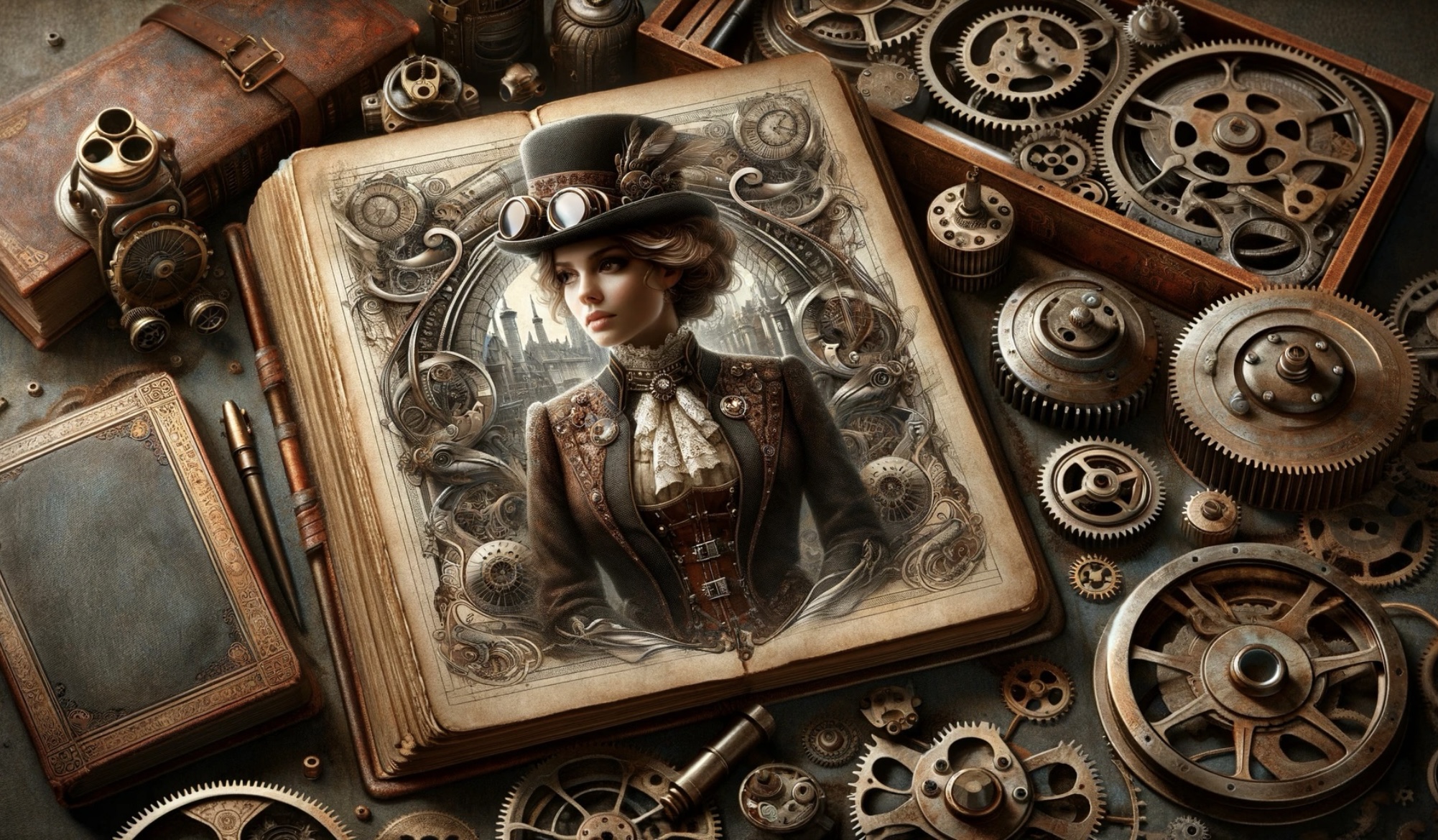What is Steampunk?
Steampunk is a literary subgenre of science fiction that’s as fascinating as it is unique. If you’ve ever stumbled upon a book or movie filled with Victorian-era settings combined with futuristic technology powered by steam, then you’ve encountered the steampunk genre. But what is steampunk, exactly, and why has it captured the imagination of so many readers and writers? Let’s dive into the world of gears, goggles, and airships to find out.

At its core, steampunk reimagines history. It takes the past and twists it with an inventive flair, often setting stories in an alternative 19th century where steam power remains the dominant technology. This genre blends the old with the new, merging historical elements with speculative future inventions. Think brass robots walking the foggy streets of London or steam-powered airships soaring the skies – that’s the steampunk genre for you.
Origins of the Steampunk Genre
The term “steampunk” was coined in the 1980s, but the roots of the genre stretch back further, drawing inspiration from the works of 19th-century authors like Jules Verne, H.G. Wells, and Mary Shelley. These authors, often associated with the scientific romances of the Victorian and Edwardian eras, laid the groundwork for what would become steampunk, with their imaginative stories that blended science fiction with the technological optimism of the age.
The actual term “steampunk” was coined by writer K.W. Jeter in a letter to Locus Magazine in 1987, as a playful way to describe the retro-futuristic works he and fellow authors Tim Powers and James Blaylock were writing, which nostalgically looked back to the Victorian era’s technology and aesthetic. Jeter was seeking a way to categorize these stories that combined the technological advancements of the time with speculative fiction, much like the term “cyberpunk” had done for a more modern, computer-oriented genre of science fiction.
Steampunk, as a recognized genre, grew from these literary origins to encompass a broader cultural movement, including fashion, art, and film, all characterized by anachronistic technologies, Victorian sensibilities, and a fascination with steam-powered machinery. Despite its 1980s naming, steampunk is deeply rooted in the imagination and innovations of the 19th century, drawing on history and speculative futures to create something entirely new.
Why We Love the Steampunk Genre
So, what makes steampunk stand out? It’s the genre’s ability to mix adventure, history, and science in a way that’s both nostalgic and forward-thinking. Steampunk stories often explore themes of exploration, rebellion, and innovation, reflecting on how technology affects society and the individual. The aesthetic of the genre is unmistakable: a Victorian world outfitted with elaborate steam-powered machinery, detailed clockwork, and a dash of adventure.
Steampunk also has a unique place in the realm of creativity and expression. Beyond literature, it has inspired fashion, art, and even subcultures that embrace the steampunk ethos in their lifestyle and creativity. This blend of historical elegance with imaginative technology makes steampunk a fertile ground for storytelling and artistic exploration.
But why do people love steampunk? Part of its appeal lies in the blending of familiar historical settings with the limitless possibilities of science fiction. It offers a nostalgic look at the past, combined with the speculative twists of the future. The steampunk genre encourages us to dream of different worlds and possibilities, pushing the boundaries of imagination while remaining anchored in a reality that’s almost recognizable.
Nostalgia Meets Innovation
Steampunk is more than just a literary subgenre of science fiction; it’s a vibrant and imaginative world that captivates with its unique blend of historical and futuristic elements. Whether you’re a fan of the detailed world-building, the adventurous plots, or the thought-provoking themes, the steampunk genre has something for everyone. As it continues to evolve, one thing is certain: the genre’s blend of the past and the future, the scientific and the fantastical, will keep inspiring readers and writers for years to come. So, next time you pick up a steampunk novel, remember you’re holding a passport to an extraordinary world where imagination knows no bounds.
Meanwhile, at Dreamers…
Dreamers Writing Prompt Generator

Experience the power of simplicity with our unique writing prompt generator. Designed for writers who crave spontaneity and surprise, our tool delivers one meticulously crafted prompt at a time.
Top 25 Most Popular Manga Right Now

If you’re searching for the most popular Manga right now, this top 25 list is the ideal starting point, whether a beginner or enthusiast.